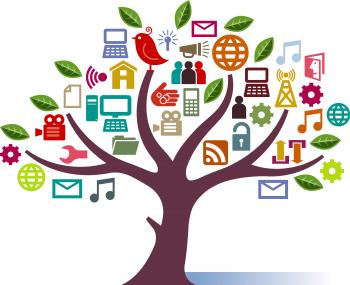 As technology advances, so does the use of technology as a means of abuse. Abusers may use or deny access to technology to maintain control over and monitor survivors' lives. They may hide cell phones, tablets and computers, or threaten to harm their victims for using those devices and other forms of technology without their knowledge or permission. Abusers may prevent survivors from having contact with friends and family through these means, and survivors may avoid using technology because of the risk of being monitored. Even more importantly, survivors are often unable to use technology to plan for their safety – as a means to access emergency contacts and resources.
As technology advances, so does the use of technology as a means of abuse. Abusers may use or deny access to technology to maintain control over and monitor survivors' lives. They may hide cell phones, tablets and computers, or threaten to harm their victims for using those devices and other forms of technology without their knowledge or permission. Abusers may prevent survivors from having contact with friends and family through these means, and survivors may avoid using technology because of the risk of being monitored. Even more importantly, survivors are often unable to use technology to plan for their safety – as a means to access emergency contacts and resources.
How can someone with a technology background help?
1. Teach Basic Tech Skills
Many survivors of domestic violence need training on the use of computers and other technology. Due to the isolation and control often exercised by abusers, many survivors have not had much experience using the Internet. Survivors residing in shelters are able to seek various services and resources online, such as employment opportunities. Individuals well versed in technology are encouraged to donate their time by teaching a computer skills class to survivors. Volunteer instructors can assists survivors with computer basics including resource searching and information management, using applications like Word, Excel, and email, and privacy protection and security, depending on individual needs.
2. Train on Safe Use of Social Media
Many survivors of domestic violence have been, and continue to be, stalked, harassed, and violated through the misuse of social media. In the wake of these incidents, more and more women are discouraged from using social media and networking in positive, enjoyable, and helpful ways. It is imperative that survivors feel safe and empowered to utilize social media. Not only can social networking help survivors feel reconnected with the world from which they were most likely once isolated, these channels can also connect survivors with systems of support.
Individuals well versed in social media and networking tools can reach out to domestic violence organizations and women’s shelters to offer education on the safe and appropriate use of these platforms. Recommended topics include managing privacy settings on social networking sites, adding security options to mobile devices, understanding methods of surveillance such as GPS tracking, and managing password protected accounts. Those engaged in Facebook, Twitter, and other social media channels can also connect to anti-violence organizations and share information and resources that may be helpful to survivors within their own networks. Learn more by visiting VAWnet’s special collection, Safety & Privacy in a Digital World.
The Safety Net Project
A project of the National Network to End Domestic Violence (NNEDV), the Safety Net Project addresses how technology impacts the safety, privacy, accessibility, and civil rights of survivors through education, training and advocacy. In addition to conducting trainings through the Safety Net Project, NNEDV has created a wealth of resources to help individuals learn about and respond to the many ways that technology impacts survivors of domestic violence.
WSCADV Technology Safety Project
In response to the technology needs of survivors, the Washington State Coalition Against Domestic Violence launched the Technology Safety Project in 2005. This program was designed to educate domestic violence and sexual assault advocates about the benefits and risks of technology, with the ultimate goal of helping survivors access needed resources and plan for their safety. To access their Survivor’s Guide to Technology Safety guide, contact the Washington Coalition of Sexual Assault at 360.754.758.
3. Donate Tech Equipment
The Verizon Wireless Hopeline encourages customers to mail in or deliver their old cell phones and equipment, which are then reprogrammed or refurbished through environmentally safe means and delivered to survivors. Individuals can send in their own phones and advise their friends, family, and co-workers to do the same. On a larger scale, individuals can organize a phone drive by advertising and gathering phones to send to Verizon that are ultimately delivered to shelters for use by survivors. Click here for more information on phone drives.
Individuals can help survivors of domestic violence access valuable information and resources by simply donating computers, tablets or other tech equipment to their local domestic violence shelter. Survivors who have left their abusers, or are on the run, can benefit from the use of devices such as global positioning systems (GPS) or home alarm systems. In 2010 a medical student named Maria Georgen created Safety PACS (Preventing and Confronting Stalking) after her sister was the victim of a stalker. Safety Pacs provides victims with free backpacks that contain cellphones, door-stop alarms, personal emergency alert devices and a book about stalking and safety planning.
4. Fund Technology Projects
Technology impacts the safety, privacy, accessibility, and civil rights of survivors. Initiatives like Safety Net, highlighted above, address these impacts through education, training and advocacy with support from funders including Verizon. With these funds, NNEDV has been able to recruit and train a network of technology safety advocates at domestic and sexual violence coalitions who are ultimately available to help determine how technology impacts survivors in different communities.









